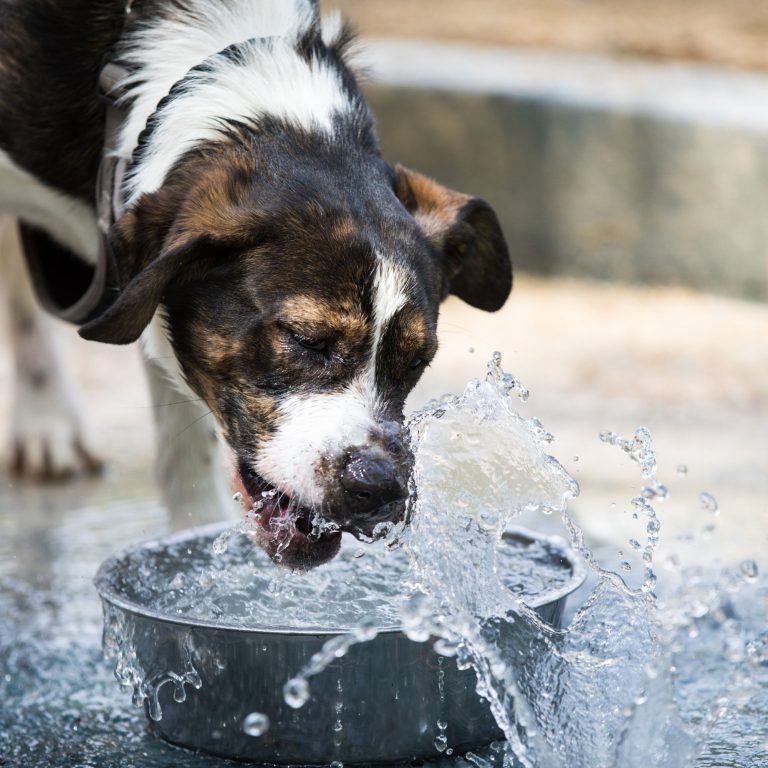7. Enhance Your Reptiles Comfort: Choosing the Right Enclosure Heating Pads
Understanding Reptile Heating Pads
When it comes to providing the ideal environment for your reptile, proper heating is essential for their well-being. Reptiles are ectothermic animals, meaning they rely on external sources of heat to regulate their body temperature. In this section, we will explore the importance of proper heating for reptiles and how reptile heating pads work.
The Importance of Proper Heating for Reptiles
Reptiles, being cold-blooded creatures, cannot generate their own body heat like mammals. It is crucial to provide them with an appropriate heat source to maintain their body temperature within a specific range. Proper heating is vital for several reasons:
-
Thermoregulation: Reptiles rely on external heat sources to regulate their body temperature. Maintaining the correct temperature gradient within their enclosure allows them to move between warmer and cooler areas as needed for activities such as digestion, basking, and thermoregulation.
-
Metabolism and Digestion: Reptiles are highly dependent on their environment to regulate their metabolism and digestion. Adequate heat helps facilitate proper digestion and metabolic processes, ensuring that your reptile can efficiently break down food and absorb nutrients.
-
Comfort and Well-being: Providing the right temperature range helps create a comfortable and stress-free environment for your reptile. It allows them to exhibit natural behaviors and promotes overall health and well-being.
How Reptile Heating Pads Work
Reptile heating pads, also known as reptile heat mats, are specially designed devices that provide a gentle and controlled heat source for reptiles. These pads are placed beneath the enclosure, creating a warm surface for your reptile to rest on. They work by generating heat through an electrical heating element embedded within the pad.
The heat generated by the reptile heating pad is transferred to the enclosure, creating a warm area for your reptile to thermoregulate. The pads are typically equipped with a thermostat, allowing you to adjust and maintain the desired temperature range for your reptile’s specific needs. For more precise temperature control, you can consider using a reptile heat pad thermostat, which ensures that the heat pad operates within the desired temperature range.
It’s important to note that reptile heating pads should never cover the entire floor of the enclosure. Creating a temperature gradient with a warm side and a cooler side allows your reptile to move between different temperature zones as needed. This mimics their natural environment and provides them with options to regulate their body temperature effectively.
Understanding the importance of proper heating and how reptile heating pads work will help you create a comfortable and suitable habitat for your reptile companion. Remember to regularly monitor the temperatures within the enclosure to ensure they remain within the optimal range for your specific reptile species. For more information on reptile heating pads and other heating options, check out our article on reptile heating pads.
Benefits of Using Reptile Heating Pads
Reptile heating pads offer several benefits that contribute to the overall well-being and comfort of your reptile friend. From maintaining optimal temperatures to promoting digestion and metabolism, these heating pads play a vital role in creating a comfortable environment for your reptile.
Maintaining Optimal Temperatures
One of the primary benefits of using reptile heating pads is their ability to maintain optimal temperatures within the enclosure. Reptiles are ectothermic, meaning they rely on external heat sources to regulate their body temperature. Heating pads provide a consistent and controlled source of heat, allowing reptiles to bask and thermoregulate effectively. This is especially important for reptiles that require specific temperature gradients to thrive. By simulating their natural habitat, heating pads help reptiles maintain their ideal body temperature, which is crucial for their overall health and well-being.
Promoting Digestion and Metabolism
Reptiles are known for their unique digestive systems, which are highly influenced by temperature. Reptile heating pads aid in promoting digestion and metabolism by creating an environment that supports these processes. When reptiles are provided with the appropriate heat, their digestive enzymes function optimally, allowing for efficient digestion of food. Additionally, the warmth provided by heating pads helps to stimulate appetite, ensuring that your reptile receives the necessary nutrition for growth and development.
Creating a Comfortable Environment
Reptiles thrive in environments that closely mimic their natural habitats. By using heating pads, you can create a comfortable environment for your reptile friend. Reptile heating pads provide a warm surface for reptiles to rest on, which can be especially beneficial for species that require belly heat, such as snakes and turtles. The warmth from the heating pads not only helps reptiles feel comfortable and secure but also encourages natural behaviors such as basking and seeking heat sources.
To maximize the benefits of reptile heating pads, it’s important to choose the right size and wattage for your specific reptile species and enclosure. Additionally, invest in a reliable temperature control and safety features to ensure that the heating pad operates within the desired temperature range and to prevent overheating. For more information on the different types of reptile heating pads available, check out our articles on reptile heat mats, reptile tank heating pads, and reptile terrarium heating pads.
By providing your reptile with the appropriate heating pad, you can create a comfortable and conducive environment that supports their natural behaviors, promotes their health, and enhances their overall quality of life.
Factors to Consider When Choosing Heating Pads
When selecting heating pads for your reptile enclosure, there are several important factors to consider. Taking these factors into account will ensure that you choose the right heating pads to provide optimal comfort and safety for your reptile. Let’s explore three key factors to consider: size and wattage, temperature control and safety features, and installation and placement.
Size and Wattage
The size and wattage of the heating pads are crucial considerations when choosing the right heating pads for your reptile enclosure. The size of the heating pad should be appropriate for the size of your enclosure, providing enough coverage to create a warm area for your reptile to bask in. It’s important to measure your enclosure accurately and choose a heating pad that matches the dimensions.
Wattage refers to the amount of power consumed by the heating pad. It’s essential to select a heating pad with an appropriate wattage for your enclosure. Higher wattage heating pads are suitable for larger enclosures, while smaller enclosures may require lower wattage heating pads. Check the manufacturer’s recommendations for wattage based on the size of your enclosure.
Temperature Control and Safety Features
Maintaining the right temperature is crucial for the health and well-being of your reptile. Look for heating pads that offer temperature control features such as adjustable thermostats or built-in thermostats. These features allow you to set and maintain the desired temperature range for your reptile’s enclosure. It’s important to monitor the temperature regularly using a separate thermometer to ensure that it remains within the recommended range.
Safety features are also essential when choosing heating pads for your reptile enclosure. Look for heating pads that have built-in safety features such as automatic shut-off mechanisms to prevent overheating. This ensures that your reptile is protected from excessive heat exposure and reduces the risk of accidents or damage to the enclosure.
Installation and Placement
Proper installation and placement of heating pads are vital for their effectiveness and your reptile’s safety. Follow the manufacturer’s instructions carefully when installing the heating pads in your reptile’s enclosure. Some heating pads come with adhesive backing or hooks for easy placement. Ensure that the heating pad is securely attached to the enclosure floor or side, depending on the type of heating pad you choose.
Consider the specific needs of your reptile when determining the placement of the heating pad. Some reptiles may prefer a basking spot directly on the pad, while others may prefer a slightly elevated area nearby. It’s important to observe your reptile’s behavior and adjust the placement of the heating pad accordingly to provide the most comfortable environment.
By considering the size and wattage, temperature control and safety features, and installation and placement, you can choose the right heating pads for your reptile enclosure. Remember to always prioritize the well-being and safety of your reptile when making decisions about their heating needs. For more information on reptile heating pads, check out our article on reptile heating pads.
Types of Reptile Heating Pads
When it comes to providing the right heat for your reptile’s enclosure, there are several types of heating pads to choose from. Each type offers unique benefits and considerations. Let’s explore the three main types: under tank heating pads, radiant heat panels, and heat tape.
Under Tank Heating Pads
Under tank heating pads, also known as heat mats or heat pads, are one of the most common types of reptile heating pads. These pads are designed to be placed underneath the reptile’s enclosure, providing heat from the bottom. The heat is then transferred upwards to create a warm environment for your reptile.
Under tank heating pads are typically made of a durable material that can withstand the weight of the enclosure. They often come with adhesive backing for easy installation. These pads are ideal for reptiles that require belly heat, such as snakes or lizards. They can also be used for terrariums or tanks with a glass bottom.
Radiant Heat Panels
Radiant heat panels are another option for heating reptile enclosures. These panels emit infrared heat, which mimics the warmth of the sun. Radiant heat panels are usually installed on the ceiling or side of the enclosure, providing a gentle and even distribution of heat.
One of the advantages of radiant heat panels is that they don’t emit light, making them ideal for reptiles that require a natural day-night cycle. They are also energy-efficient and can maintain a consistent temperature within the enclosure. Radiant heat panels are commonly used for larger enclosures or habitats that house multiple reptiles.
Heat Tape
Heat tape, also known as heat cable, is a flexible heating element that can be easily installed within the reptile enclosure. It is made of a resistive wire that generates heat when an electric current passes through it. Heat tape is versatile and can be used to create customized heating zones within the enclosure.
Heat tape is often installed on the sides or back of the enclosure to provide warmth. It can be controlled by a thermostat to maintain the desired temperature. Heat tape is commonly used for reptile racks or enclosures that require precise temperature control, such as breeding setups.
| Heating Pad Type | Suitable Reptiles | Placement |
|---|---|---|
| Under Tank Heating Pads | Snakes, lizards, terrariums | Underneath the enclosure |
| Radiant Heat Panels | Large enclosures, multiple reptiles | Ceiling or side of the enclosure |
| Heat Tape | Reptile racks, precise temperature control | Sides or back of the enclosure |
When choosing a reptile heating pad, consider the specific needs of your reptile and the size of the enclosure. It’s important to provide the right amount of heat to create a comfortable environment. Remember to use a thermostat to regulate the temperature and ensure the safety of your reptile. For more information on selecting the best reptile heating pad for your pet, check out our article on best reptile heating pads.
Tips for Using Reptile Heating Pads
To ensure the proper functioning and effectiveness of reptile heating pads, it’s important to follow a few essential tips. By monitoring temperatures, providing additional heat sources when necessary, and maintaining regular cleaning and maintenance routines, you can create the optimal environment for your reptile friend.
Monitoring Temperatures
Regularly monitoring the temperatures inside your reptile’s enclosure is crucial when using heating pads. Use a reliable thermometer or temperature gauge to measure the temperature at different spots within the enclosure. This will help you ensure that the heating pad is providing the desired level of warmth.
It’s important to maintain an appropriate temperature gradient within the enclosure, allowing your reptile to choose the most comfortable spot. Consult the specific temperature requirements for your reptile species and adjust the heating pad accordingly. For more information on setting up a suitable temperature gradient, check out our article on reptile heating pads.
Providing Additional Heat Sources
While reptile heating pads are designed to provide consistent heat, it’s often beneficial to supplement them with additional heat sources. This is particularly important for larger enclosures or if your reptile requires higher temperatures. Consider using heat bulbs, ceramic heat emitters, or radiant heat panels in combination with the heating pad to provide a well-rounded heating solution.
By incorporating multiple heat sources, you can create a more natural and comfortable environment for your reptile. Ensure that the additional heat sources are properly installed and positioned to avoid any potential hazards. Consult our article on reptile heat mats for more information on different heat sources for reptiles.
Regular Maintenance and Cleaning
Maintaining cleanliness and carrying out regular maintenance for your reptile heating pad is essential for its longevity and optimal performance. Follow the manufacturer’s guidelines for cleaning and maintenance, which usually involve wiping the surface with a damp cloth or sponge. Avoid using harsh chemicals or abrasive materials that may damage the heating pad.
Regularly inspect the heating pad for any signs of wear and tear, such as frayed wires or cracks in the surface. If you notice any damage, it’s important to replace the heating pad immediately to prevent any potential hazards. Additionally, ensure that the heating pad’s power cord is in good condition and not exposed to any potential chewing or damage by your reptile.
By adhering to these tips, you can maximize the benefits of your reptile heating pad and create a comfortable and safe environment for your reptilian friend. Remember to refer to our article on reptile heat pad thermostat for guidance on temperature control and safety features. Regularly monitor temperatures, provide additional heat sources when needed, and prioritize the cleanliness and maintenance of your reptile heating pad to enhance your reptile’s comfort.







